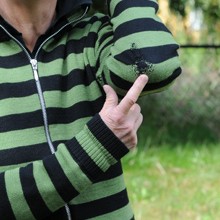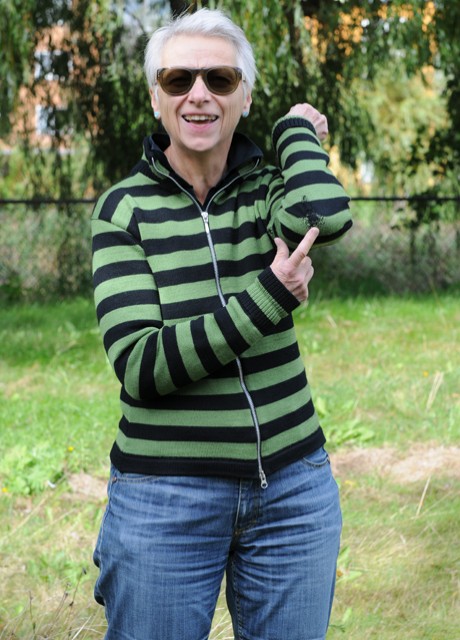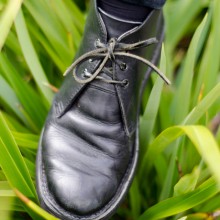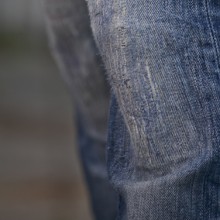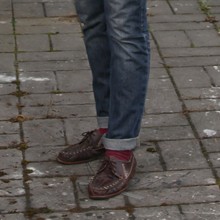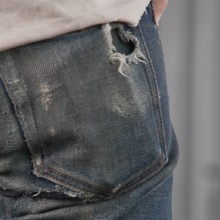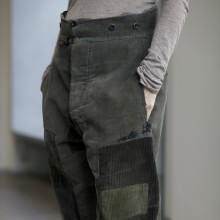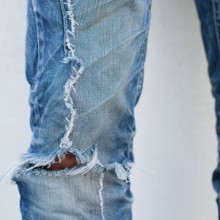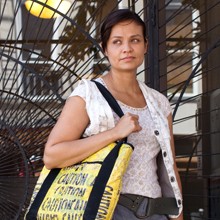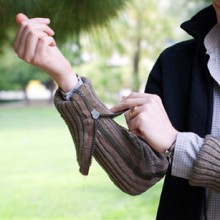
Mending
To repair a garment and keep it in active service is to practice the skill of user-ship. It calls upon human senses to diagnose what needs to be done and the right emotional tone to carry it through. Stitching, darning, patching and remodelling oversee a subtle shift in the power relations associated with garments: for the work of mending, unlike the world of production, is about people not machines.
Cuff
"The green and black sweater, I bought maybe fifteen years ago and it’s a hundred per cent wool and it’s machine knitted and it’s sewn on a sewing machine. So it’s not like a hand made piece but it was a sample, a one off. It’s striped… a wide stripe [with] exactly the same amount of black and grass green. And it has a zipper in the front which I find very practical because it’s easy to get on and off.
Then maybe two years ago …the cuffs [started wearing through where I had rolled them over as the cardigan was too long in the sleeves] and I knew that was not skilled enough to repair them in a nice way. And then my good colleague and friend, Joy, offered to redo the cuffs… and I did not imagine that she could do it so nicely. I know that she’s a very a skilled knitter and with all kind of handicrafts but when it came back it was perfectly as new… she put her knitting needles on the cuff shortened the sleeve and reattached it.
And then about a year later holes [appeared] on the elbows and I was of course really sad because it was really nice with the cuffs so I mended the elbow holes by stitching them myself pretty badly, you know, like you do with weaving stitches, not knitting stitches, so it still holds on for a number of years..."
Kolding, Denmark - September 2012
Photograph by
Jens Christian






